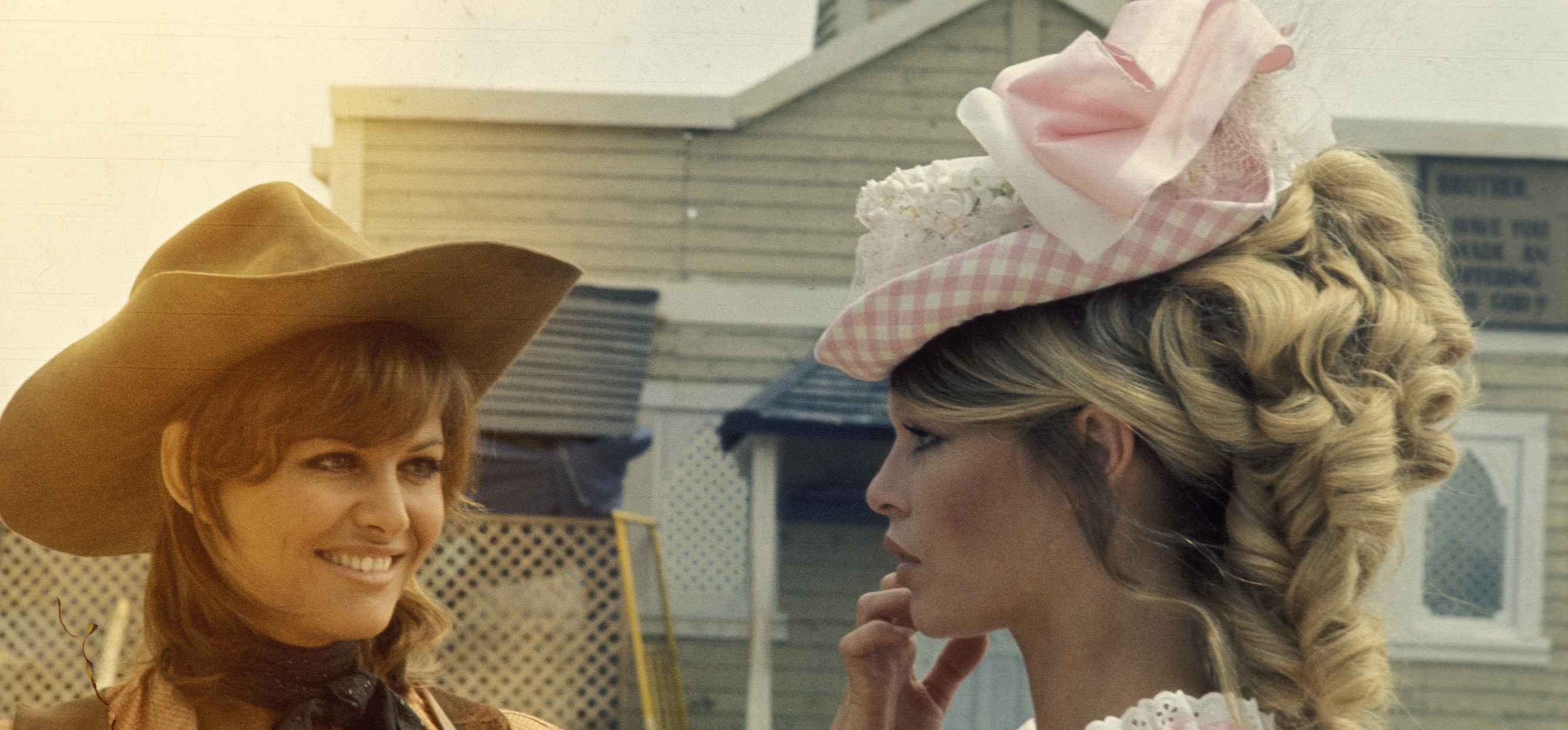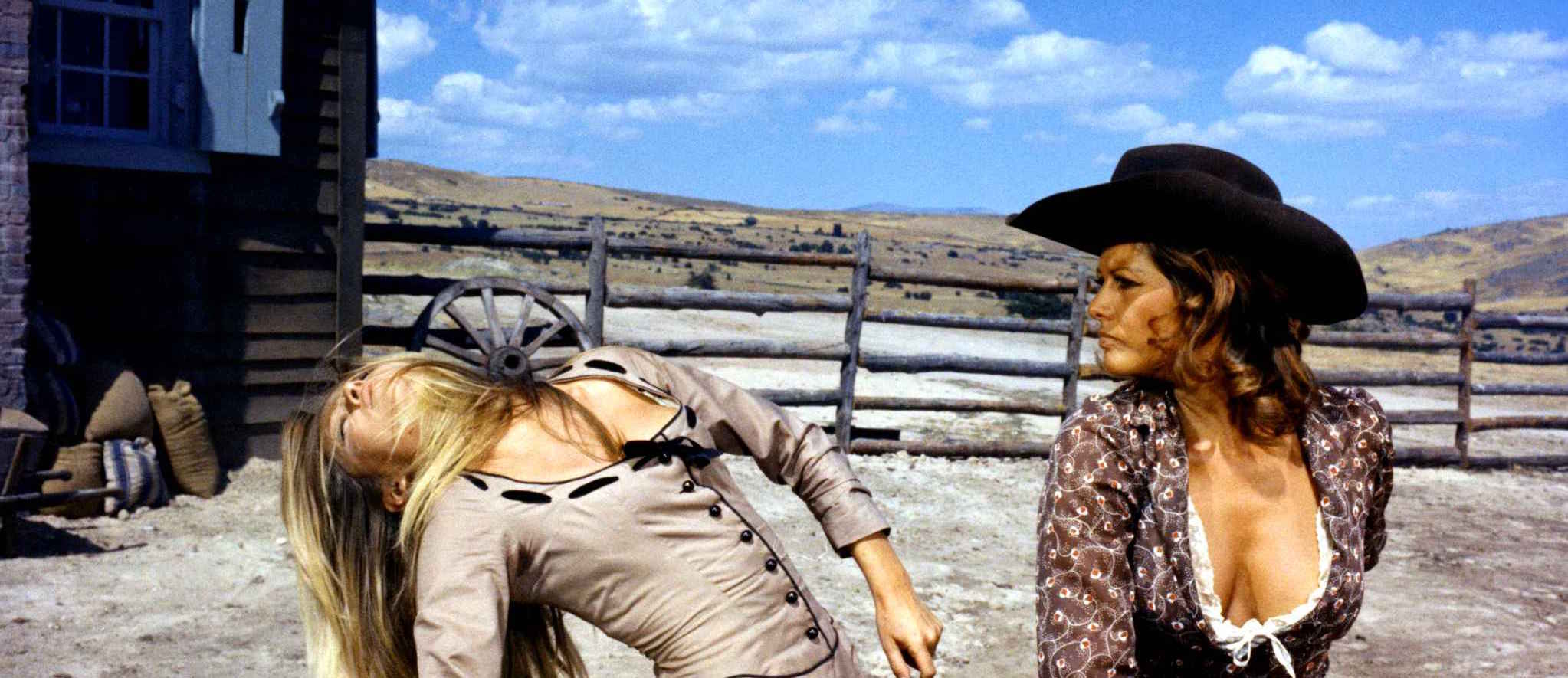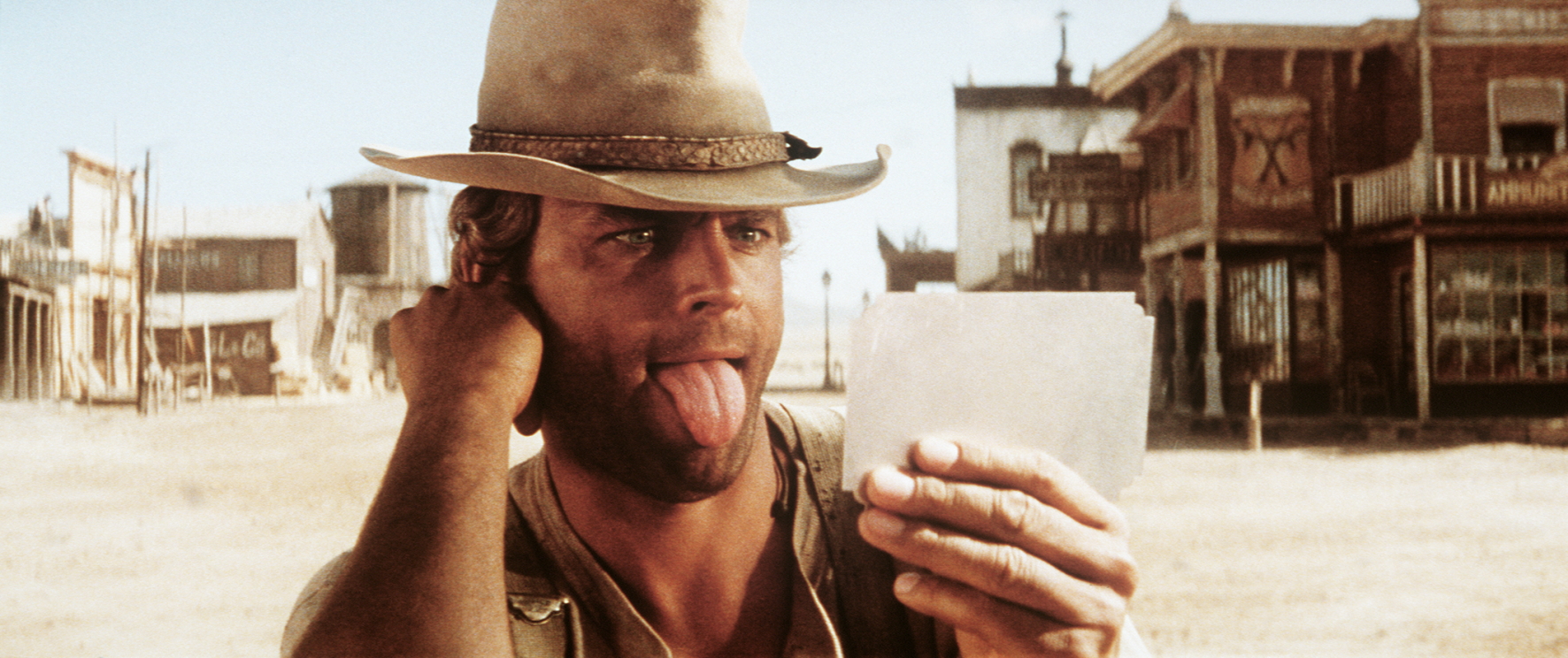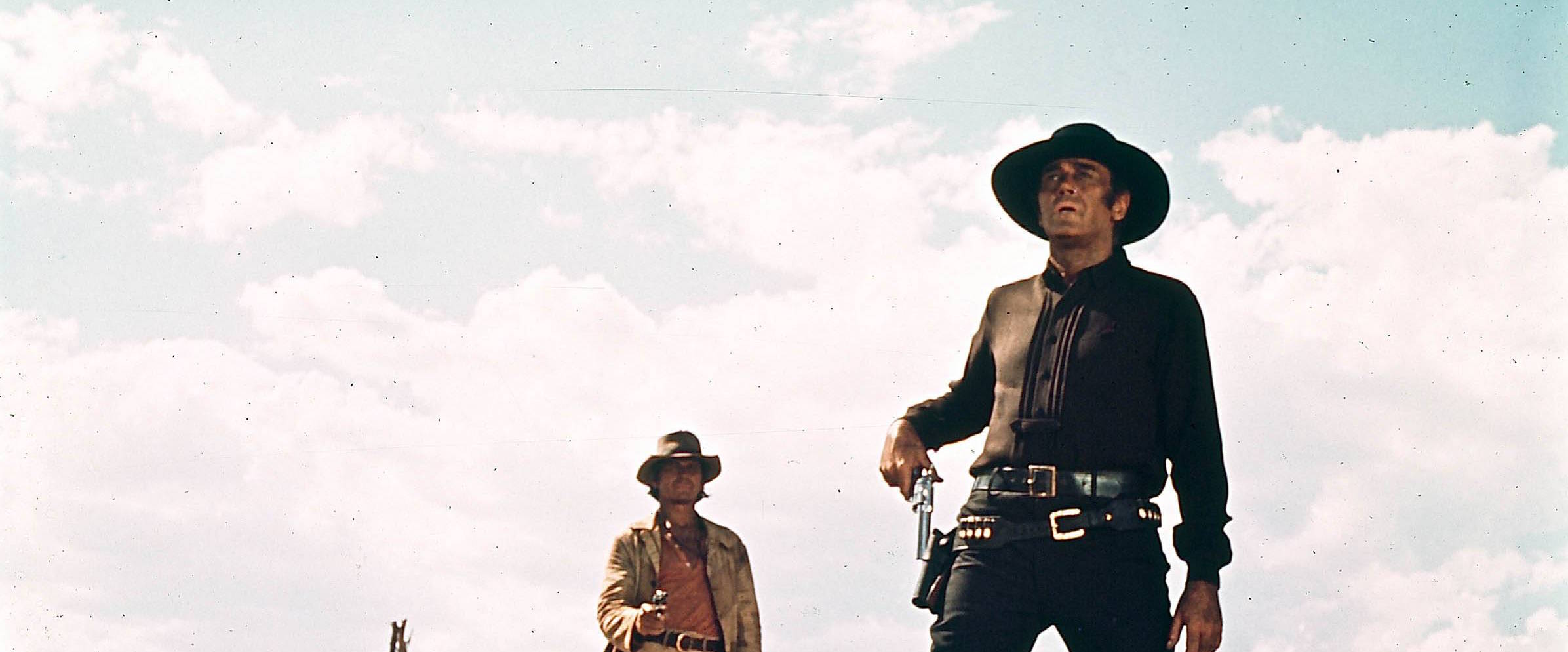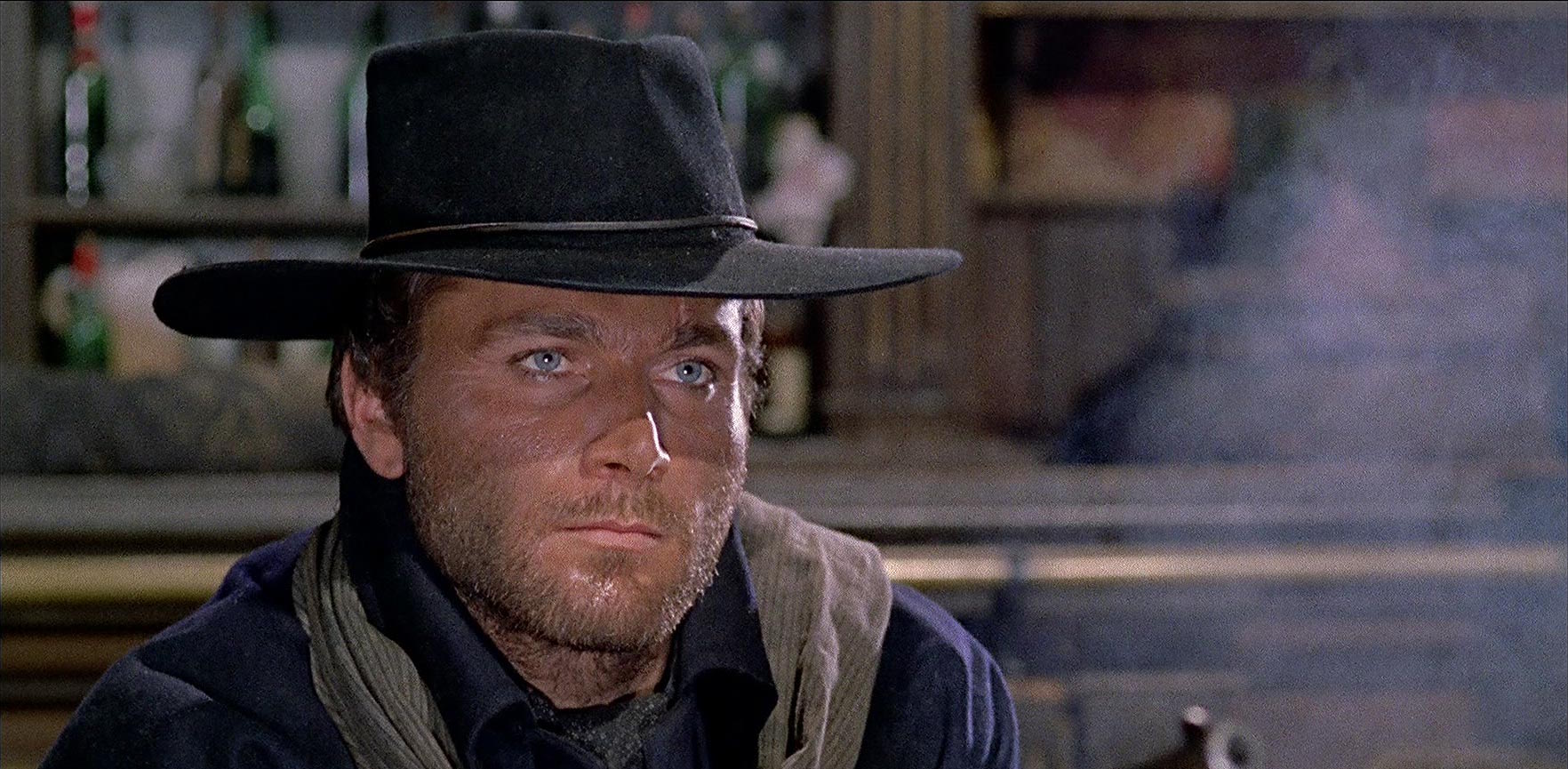Films
Starting a few years ago, students began to complain about having an extra in-class screening. I am currently engaging in an experiment to see if I can get rid of screenings; I don't like doing this because it means many of you will watch many of the films on YouTube, which often has low-quality, commercially interrupted copies (where possible, I have provided YouTube links, but this should be seen as the option of last resort). In the case of this class, there are complete, restored, high-definition copies available through Amazon and other purveyors. In a very few cases (Django Unchained), the content is available through Netflix—at the time of this writing. Worse still, I know many students will watch while doing something else: online shopping, texting, talking on the phone, etc.—stuff they would never do in an in-class screening. Please, please, do yourselves a favor, and watch these films, as much as possible, in theater-like conditions: high-quality, uninterrupted.
Some of these films, however, are not available on YouTube, or Netflix or Amazon Prime. This is especially true of the most famous (Ford's The Searchers, Leone's films, The Great Silence, The Big Gundown, and Compañeros). You should expect to purchase these films in a format that you find acceptable, in advance of the day of discussion. I will be tolerant if you come to class once without having seen the film, but really, genuinely pissed the second time. You should purchase, rent, download, or otherwise obtain, at an absolute minimum: The Searchers, For a Fistful of Dollars, The Good, the Bad & the Ugly, Compañeros, The Big Gundown, and Django Unchained (unless you have Netflix). It is likely you will have to purchase two or three more, as I expect several of our titles to disappear from YouTube over the course of the semester.
Paper 1
The first paper is 6-7 pages. I sometimes encounter students who are in their senior year of college, and they have never had to write a paper more than 2 or 3 pages long. I expect you don't think this is adequate preparation for "the real world" (clear writing is one of the number one skills that employers say they'd like to see more of in college graduates), and I don't think it's adequate either. If you haven't written a longer paper before, I encourage you both to seek some guidance at the Writing Center, and to look at my advice on writing papers (both are available through the "Writing" page in the main menu at the top of this page).
For the first paper, you will discuss the spaghetti Western in Fisher's terms—as a radical, left-wing response to the American Western. For starters, you might agree or disagree with Fisher, focusing on a particular point. For example, you might agree with him that Leone's films are not actually typical spaghetti Westerns in that they are relatively politically conservative (or at least not radically left-wing); you might disagree with him, and say that, for all of their radical ideas, films like The Great Silence were still just entertainment. Then things get more interesting: you might agree that spaghettis are radical films—but disagree that American films were conservative. You might agree that American Westerns were nostalgic and conservative—but find that spaghetti Westerns are radically conservative, even reactionary, when it comes to gender. And so on. You must take a position on whether these films are political in nature, what form their politics takes, and whether it is effective or not. Your argument should not be apparent to even a casual viewer (“these films are about violence, and it‘s really violent violence!”), they should make a clear point and argue it in a persuasive way, with evidence.
Paper 2
For your second paper, also 6-7 pages in length, you will write on a subject of your own choosing, with an argument of your own choosing. When I arrived at Illinois about 12 years ago, I could (and typically did) say to a 400-level class, "and at the end, write, you know, a final paper," and they would just do that. By four or five years ago, students began to express extreme, even hysterical, levels of nervousness about having to pick a paper topic and write a paper. This is not ok. (See, again, "real world" above.) I expect freshmen to need help picking a paper topic, and sophomores to have trouble developing their own argument—not juniors and seniors. Part of your education in this class is learning about different things that we might say about film and articulating arguments about those things. Fisher will do it all semester, as will the other articles we read; I will do it every day in class, and you should spend class time practicing it, too. Here are some of the things you might write about: gender, politics, national identity, Italian culture and history, imperialism, the 1960s as a transitional historical era, costuming, "realism" in film, genre and generic formulas, narrative experimentation, alternative film styles, biopolitics, the "homo sacer," concentration camps, sexual violence and its representation, the disappearance of women from genre films in the 1970s, transnational film, the history of the action film, homoeroticism and the homosocial, Mexico, Leone's signature use of ultra-low-angle and extreme close-up shots, auteurism in genre films, masculinity and the male body, and the machine gun and its historical relationship to film. You need to say something about one of these topics, something that is not apparent to any viewer (don't tell me these films are violent, for example, or that they have a lot of death in them), and argue your point in a persuasive way, with evidence.
Honors
Students taking this course for honors credit will do some extra writing (at least 4-5 pp.) and reading on a topic relevant to the materials in the class; they do, however, have some leeway to address the class material in new ways (in other words, it does not need to be “just another paper,” but may involve original research by the student, or less traditional topics, or less traditional forms).
Grades
Grades
20% attendance and participation
40% first paper
40% final paper
Graduate students: presentation
In 15-20 minutes, with or without PowerPoint or its equivalent, present one of the assigned readings (the supplemental texts by Esposito, Agamben, La Capra or Fisher) or another theoretical text of interest. You may wish to write out your presentation in advance (a typical conference presentation is approximately 8 pages, double spaced, which will usually give you about 15 minutes; 10 pages will give you about 20 minutes), and read that in a communicative and pedagogically effective way. While your audience is chiefly undergraduates, it will normally be graduate students and faculty, so write in a way that is comprehensible but intellectually sophisticated. (And really, why wouldn't you just do that all the time?) Your task is threefold: (1) explain the reading(s) and the arguments made in some detail; (2) explain how they are significant for our understanding of the spaghetti Western; (3) position yourself with respect to the readings—what are the advantages and shortcomings of an understanding of the Italian Western based on, say, Esposito and biopolitics? Or Edelman and queer theory?
A word on PowerPoint, since it is a pet peeve of mine. PowerPoint exists in order to provide a visual counterpoint to your spoken presentation. Meditate on that mantra until you understand it. PowerPoint is not there to repeat your presentation, or worse still, to put up large blocks of text that people are supposed to read while you talk about something else. You might as well ask your audience to practice basketball while you talk. Some quick quidelines (these apply equally to Keynote, Prezi, etc.):
• Use only one template for the entire presentation.
• Use a maximum of two fonts (one for headers, one for text).
• A maximum of 3 font sizes may be used.
• Use simple, legible fonts—something assertive for headers, and a plain serif for text.
• Most of your slides should consist of images, and just images.
• Never put a block of text on the screen unless it is a passage to be analyzed.
• If that passage is too long, break it into multiple slides.
• Otherwise, if text doesn't fit, don't make it smaller—make it shorter.
• Every animation and visual "trick" you use will distract your audience from what you are saying.
• Approximately one slide per paragraph (more is okay—don't leave a single slide on screen for too long).
Graduate students: seminar paper
Seminar papers should be 18-24 pages in length, and should demonstrate good writing, and a serious engagement with the primary material and the scholarship on it. When you write a seminar paper, you are practicing to write an article—they rarely get to the stage where they are actually ready to be submitted to a journal, but you are striving to move them in that direction. That means you should have an important issue in the scholarship that you think you have an interesting or worthwhile take on, and you should have read a selection of the scholarship on the specific text or texts you will be writing on. Make it sound like you know a part of the field; read a number (let's say 10) of articles and a couple of books; spend a little time on Google; get an impression of the kind of work that people are doing. In the case of the spaghetti Western, where the field of schoalrship is very small, you will almost necessarily turn to larger theoretical questions. This is good.


